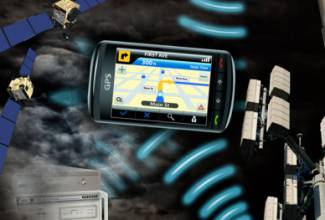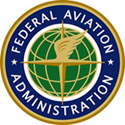 Photo: Wikimedia Commons
Photo: Wikimedia CommonsAttorneys for LightSquared Subsidiary LLC submitted a proposed work plan on Friday (February 25, 2011) for analyzing potential interference to GPS devices. The plan, required by the FCC as a condition of its granting a waiver to its Ancillary Terrestrial Component (ATC) rule for mobile satellite services (MSS), proposes to establish a working group (WG) to study the GPS overload/desensitization.
Attorneys for LightSquared Subsidiary LLC submitted a proposed work plan on Friday (February 25, 2011) for analyzing potential interference to GPS devices. The plan, required by the FCC as a condition of its granting a waiver to its Ancillary Terrestrial Component (ATC) rule for mobile satellite services (MSS), proposes to establish a working group (WG) to study the GPS overload/desensitization.
It was developed as a result of the Federal Communication Commission (FCC) allowing LightSquared to build an extensive high-powered terrestrial communications network operating in L-band spectrum adjacent to GPS.
Worked out in cooperation with the U.S. GPS Industry Council (USGIC), the proposal calls for establishing a group comprised of two co-chairs, a technical working group (“TWG”), and advisors. The working group will be co-chaired by representatives of LightSquared and the USGIC — respectively, Jeffrey Carlisle, LightSquared’s executive vice-president of regulatory affairs and public policy, and Charles R. Trimble, USGIC chairman.
Despite its participation in shaping the work plan, the USGIC and other GPS industry interests have not abandoned efforts to get the FCC commissioners to overturn the order and waiver granted by the chief of the agency’s International Bureau.
The same day that the work plan was submitted, the USGIC — joined by Trimble Navigation, and GARMIN International — filed an application for review by the FCC commissioners. Four other applications for review were filed on February 25 by Lockheed Martin Corporation (which raised particular concerns about the satellites it operates as part of the Federal Aviation Administration’s Wide Area Augmentation System or WAAS), the General Aviation Manufacturers Association (GAMA), Aviation Spectrum Resources, Inc. (ASRI), and the American Congress on Surveying and Mapmaking (ACSM).
The objections included several common and overlapping complaints — that the LightSquared transmitters would likely cause interference that seriously affected safety-of-life (such as civil aviation and emergency services) and other GPS-dependent activities and render hundreds of millions of existing GPS devices inoperable or unreliable. Furthermore, the requests for review argued that the comment period for LightSquared’s waiver was inappropriately short for what was a substantial alteration in policy, that it contravened previous FCC orders on that prohibited terrestrial-only systems being allowed under the ATC provision, and that the conditions for granting the waiver were skewed in LightSquared’s favor.
Moreover, objections continue to be raised by military officials, including comments made February 17 by Gen. William Shelton, commander of the Air Force Space Command (AFSPC), at the Air Force Association’s Air Warfare Symposium.
“If we allow that system to be fielded and it does indeed jam GPS,” said Shelton, “imagine the impact. We’re talking about $110 billion industry in GPS; we’re talking about dependence on so many things in our infrastructure. This is just unbelievable.”
“We’re hopeful that we can find a solution,” he added, “but physics being physics, we certainly don’t see what that solution would be right now.”
Similar concerns had been raised earlier by officials at the National Telecommunications and Information Administration (NTIA) and the director of spectrum and communication policy for the assistant secretary of defense.
The Work Plan and Working Group
Hashed out over the past month, the LightSquared/USGIC proposal offers fairly detailed technical guidelines for how the working group will approach the GPS interference issue.
The technical working group will be made up 14 to 20 GPS/GNSS experts — two each named by Carlisle and Trimble and the remainder as agreed upon by the two co-chairs. If the co-chairs cannot agree on sufficient members to reach the minimum membership of 14, each co-chair will have the right to appoint equal numbers of members until at 14 members are named.
A more open-ended number of technical advisors can also take part, representing “the full range of stakeholders and other affected entities, including interested manufacturers, user groups and experts in the GPS field,” according to the work plan.
Interested companies, organizations, and individuals may e-mail advisor membership requests to <info@gpsworkingroup.org>, including the name of the individual and company or organization represented and a brief biography covering applicable expertise.
The working group co-chairs are currently trying to complete formation of the TWG by the time the WG’s first progress report is due on March 15, 2011.
The TWG will establish underlying definitions for “harmful interference criteria,” and identify “relevant information regarding the broadband terrestrial radiation, including power levels, bandwidth, modulation, antenna pattern, and other technical characteristics” of the LightSquared signals.
After identifying and agreeing upon interference analysis assumptions and evaluating potential test methodologies, the TWG will select the categories of receivers and receivers to be tested, develop operational test scenarios, establish the methodology for analyzing test results, derive the test conditions based on the established operational scenarios, write the test plan and procedures, and identify and engage “appropriate neutral test facility(ies) for the testing portion of the work plan.”
The proposal anticipates that “some or all receivers, systems and networks that are laboratory tested will also be tested in a field environment. It is agreed that field testing cannot substitute for laboratory testing as it cannot replicate all conditions and is not repeatable. However, field testing has the advantage of avoiding assumptions about propagation models.”
With input from the advisors, the TWG will recommend to the co-chairs the specific receivers, systems, networks that should be tested, ensuring that the receivers, systems, and networks tested are representative of the broad range of installed GPS/GNSS/augmentation/L-band applications.
The TWG will analyze test results based on established methodology and assess whether any mitigation measures are feasible and appropriate, such as “LightSquared design considerations, types of components, transmit power, and/or operational frequency modifications that, along with the OOBE [out of band emission] restrictions previously agreed to between LightSquared and the USGIC, will prevent receiver desensitization/overload from occurring in installed GPS operations.”
Any mitigation recommendations mutually acceptable to the co-chairs will be provided to the Commission in LightSquared’s final report which is due on June 15, 2011. If and when co-chairs cannot reach consensus on the text of their interim and final reports, they will provide bracketed text indicating alternate language.
Diverse Appeals for FCC Review
Although they raised many common points, several of the requests for FCC review of the LightSquared order addressed novel issues.
The appeal from Jennifer Warren, Lockheed Martin’s vice-president, technology policy & regulation, raised additional concerns regarding effect of LightSquared transmissions on Lockheed’s two regional positioning system (RPS) satellites used for WAAS. The company holds two FCC space station licenses to operate RPS satellites at 107.3 degrees west and 133 degrees west orbital locations and is the only FCC licensee of space stations operating in the 1559-1610 MHz RNSS L1 band, according to Warren.
The RPS uplink stations have sensitive GPS/WAAS receivers, which provide critical data to control the uplink signals, Warren wrote. These use much higher gain antennas than are found in typical GPS receiver.
Interference causes these receivers to output bad data, which results in an incorrect uplink signal. Eventually, if enough interference is present, the receiver will lose lock on the proper signal and shut down,” according to Warren. “In such circumstances, this Lockheed Martin [WAAS-related] service . . . will necessarily have to cease transmission.”
In his appeal, James Hennig, GAMA’s vice-president of operations, pointed out that aviation GPS receivers are built to specifications established by a private standards-setting group, the RTCA Inc., that are incorporated into the FAA’s Technical Standard Order (TSO) regulations for airplane manufacturers.
The currently installed receivers are not built to accommodate interference from such operations such as LightSquared proposes, Hennig wrote, adding, “The cycle for achieving any necessary changes to the RTCA standard is generally at least two years. Making any relevant changes to the TSO takes at least an additional year.”
Design, testing, approval, installation, and certification of new GPS receivers “could take at least eight years, but probably much longer,” he said.
ASRI took up the aviation issue in its role as “the communications company of the air transport industry and is owned by the airlines and other airspace users. . . . [which] acts as the industry licensee in the aeronautical enroute and fixed services and serves as the industry frequency manager for United States civil aviation,” according to Kris Hutchison, ASRI’s president.
“Unimpeded GPS service is increasingly indispensable to safe and efficient airline operations and to the aviation industry’s ongoing efforts to mitigate the environmental effects of those operations,” Hutchison said in his letter to the FCC. “Indeed, the Federal Aviation Administration has undertaken a multi-billion-dollar program, known as NextGen, to shift air traffic management to a satellite-based navigation and communications system. This program will make interference-free GPS operations even more essential to the aviation industry over the next decade.”
Hutchinson went on to make the point that the practical reality of the process currently set up by the International Bureau would create an inexorable momentum behind LightSquared’s project.
“To meet its buildout requirements,” he wrote, “LightSquared is currently engaged in the construction of its network, and this network will be largely constructed by the time a final report from the working group is required in June 15, 2011. Consequently, the Commission will not resolve any interference issues until at least the six months from now, when LightSquared will have made significant progress on the construction of its network.”
Moreover, the ASRI president argued, “Once the network is constructed, it will be much more difficult for the Bureau to resolve any interference caused to GPS users for two reasons. First, because protecting GPS may require changes to LightSquared’s system design once constructed, it will be difficult and costly to reconfigure the network to protect GPS. And second, after LightSquared has invested billions of dollars in the construction of its network, the Bureau is unlikely to prevent LightSquared from providing service, even if such service causes harmful interference to GPS users.”
In a similar tone, a February 23 letter to the FCC from Edward Saade, president of Fugro EarthData, argued that FCC should put the burden of proof on LightSquared, not the GPS community, for ensuring that interference would not occur.
“The FCC should make clear that LightSquared and their investors should not proceed to make any investment in operating facilities prior to a final FCC decision.” Saade said. “Further, the FCC’s finding that ‘harmful interference concerns have been resolved’ must mean ‘resolved to the satisfaction of pre-existing GPS providers and users.’”
And finally, he suggested, “Resolution of interference has to be the obligation of LightSquared, not the extensive GPS user community of millions of citizens. LightSquared must bear the costs of preventing interference emanating from their devices GPS users or providers should not have to bear any of the consequences of LightSquared’s actions.”





